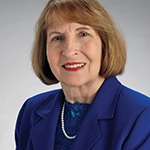
How I reimagined my career in rheumatology
Editor’s note: In part 2 of “Doctoring Differently,” the author addresses how her career has changed. Read part 1 of her journey.
In part 1 of this series, I related that my type A efforts in an academic setting building a rheumatology department from scratch resulted in burnout. I was a shell of myself. I felt anxious all the time. I could not sleep. I was seeing a therapist. When my requests to negotiate my workload were met with “take it or leave it,” I resigned without a backup plan.
I jumped without a parachute, and it was the best thing I ever did.
‘Shoot, No Parachute’
Well, let me revisit my last statement. Although resigning from my job without a back-up plan was the best thing I ever did, it was not exactly awesome at first. Jumping without a parachute was terrifying. I felt angry, lost and scared. I questioned whether I even wanted to be a doctor anymore. I cried—a lot. But I had a mortgage to pay, and I needed to figure something out.
When word got out that I was leaving the University of Texas, I was offered a few jobs in private practices around the city. But the thought of seeing more patients in less time made me nauseous. There had to be a better way.
So for the first time in my life, at age 35, I asked myself a few simple questions:
- What do I want?
- What do I need? and
- What are my values?
I realized that I love being a rheumatologist, and I love being a clinical educator. I just needed to find a way to do those differently.
How?
I started by calling any doctor I knew with an alternative career path, such as concierge medicine, management consulting or pharmaceuticals. Within a few weeks, I talked to more than 50 physicians who’d all found a niche for themselves outside the box of a hospital or clinic.
Some avenues sounded interesting, but many did not. Whatever the outcome, I thanked them for their time and asked if they knew someone I should speak with next. I was amazed to discover just how many opportunities existed for people with medical degrees that nobody had told me about in medical school.
Clinical Practice, But Different
I knew I wanted to practice rheumatology, and I knew I could not go back to the travesty that is the American healthcare system. I wanted time to spend with patients and their records. I wanted to help my patients feel seen and heard.



